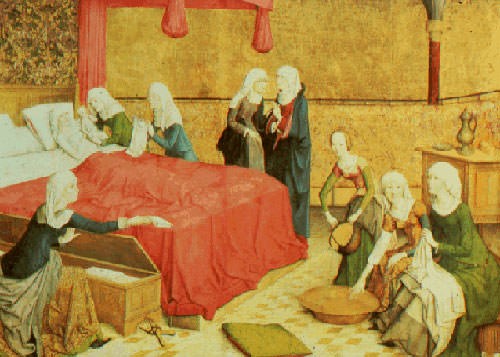The Development of the Trotula
By Monica Green
Revue d’Histoire des Textes, Vol. 26 (1996)
Introduction: Three texts on women’s medicine – the Liber de sinthomatibus mulierum, De curis mulierum, and De ornatu mulierum – are believed to have come out of the famed medical center of Salerno in the twelfth century. They were to achieve an influence throughout medieval Europe unlike any other medieval texts of their kind, pre- or post-Salernitan. Yet most medievalists, even historians of medicine, will never have heard of them and will consequently be surprised by claims to their pan-European historical importance.This is because the name they are most commonly associated with is that of Trotula alternately understood as the title or the author’s name.
It is under Trotula’s name that the texts are found in the medieval catalogues of the private libraries of Richard Fournival and Charles V of France, and in the institutional libraries of-the Sorbonne in Paris or St. Augustine’s monastery at Canterbury. It is « das Buch Trotula » that Johannes Hartlieb claims to be rendering into German in the 1460s, and the authoress Trotula that Chaucer lists as one of the authorities in Jankyn’s book of wikked wyves in his Canterbury Tales (The Wife of Bath’s Prologue). And it is the alleged author Trotulawho has exercised the talents of many modern commentators eager, alternately, to assert or deny her existence.

No comments:
Post a Comment